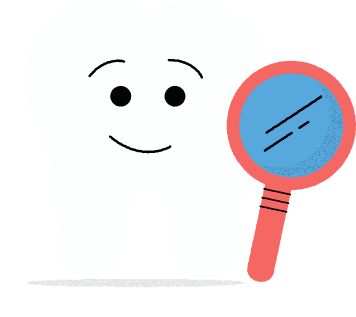A straight and stunning smile – it’s the dream, isn’t it? And with braces fitted by a specialised orthodontist, it’s a dream that’s well within reach.
But braces aren’t a treatment you can set and forget; they require regular adjustments and reviews in order to effectively align your teeth. So, just how often do braces need tightening, and what can you expect during and after your maintenance appointments?
We all know that wearing braces is not just a “set and forget” treatment; they require regular adjustments and reviews in order to safely and effectively align your teeth. So, just how often do you need to visit your orthodontist for a braces “tightening”, and what should you expect during and after your maintenance appointments?
We explore the ins and outs of braces tightening below.
How often should I have my braces tightened?
While every patient is different, you should generally have your braces adjusted or tightened every 4-10 weeks.
In the initial appointment, your orthodontist will assess the severity of your malocclusion and develop a braces-tightening schedule especially for you. Your personalised adjustment timeline will depend on your age and oral health, as well as the alignment of your teeth and jaw. Patients with severely crooked teeth may need to have their braces tightened more frequently – although even in severe cases it’s unlikely you would need your braces tightened every 2 weeks for the entire treatment period.
What happens if you don’t get your braces tightened?
If you don’t regularly have your braces tightened or adjusted by your orthodontist, they may cause damage. Why? Because as your teeth move and slowly align, the tension produced by the wires and elastics of your braces will change. This means the pressure can decrease (and stop moving all together) or may start applying pressure that you don’t want.
Your orthodontist needs to regularly adjust your braces in order for them to continue to place the correct pressure on your teeth. Your elastics need changing at each appointment, and your wires may need to be replaced, adjusted or tightened.

Why do I need to get my braces adjusted?
While their three years of additional specialist training does give your orthodontist expert knowledge in the field of straightening and aligning teeth, every person is different, and your teeth and gums may not always move as expected.
At certain points your teeth may require more pressure – or pressure in a different direction to achieve the desired results. Which is why regular monitoring and adjustment by your orthodontist is absolutely essential.
Please, whatever you do – don’t attempt to tighten or adjust your braces at home! You may well do lasting damage to your teeth and gums.
Side-effects of braces tightening
After having your braces tightened, you can expect to feel some pressure and sensitivity in your teeth, gums and jaw. The discomfort is usually mild and feels more like your teeth are bruised rather than a throbbing toothache pain. These side-effects should only last for a day or two and some people find that the pain of having their braces tightened reduces as treatment progresses.
How to tighten your braces
Keen to know what exactly is involved in having your braces tightened by an orthodontist? We break the process down step-by-step.
Your orthodontist may:
- Remove the elastic bands that affix the arch wire to the brackets on your teeth.
- Remove the arch wire itself.
- Give you the opportunity to thoroughly brush and floss your teeth without the hindrance of the elastic ligatures and wires.
- Carefully examine the health and position of your teeth to determine what adjustment or tightening is necessary.
- Place the arch wire (either your old wire or a new one) back onto the metal brackets.
- Attach new elastic bands to affix the arch wire to each bracket.

How to relieve braces tightening pain
There are many ways to relieve temporary braces tightening discomfort. Effective pain relief ideas include:
- Over-the-counter pain medicine such as paracetamol or ibuprofen.
- Topical anaesthetic creams and gels.
- Non-toxic orthodontic wax.
- An ice pack, ice water or cold foods.
- Gargling with warm salty water.
- A gum massage.
Things to eat after you get your braces tightened
After you visit your orthodontist, it’s best to stick to a soft-food diet for the first day or two after having your braces tightened (avoid hard or sticky foods like boiled lollies, popcorn or chewing gum). We recommend soft foods such as:
- Soup
- Mashed potato, pumpkin or sweet potato
- Fruit or vegetable smoothies
- Yoghurt, ice-cream or frozen yoghurt.
- Macaroni cheese or other soft pasta dishes
- Soft fruit like bananas, berries and pawpaw
- Porridge or rice pudding
Braces require regular maintenance – but a memorable smile is more than worth it. Eager to explore your options? Click here to search for an orthodontist near you now.











